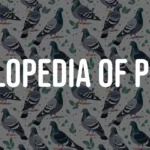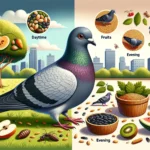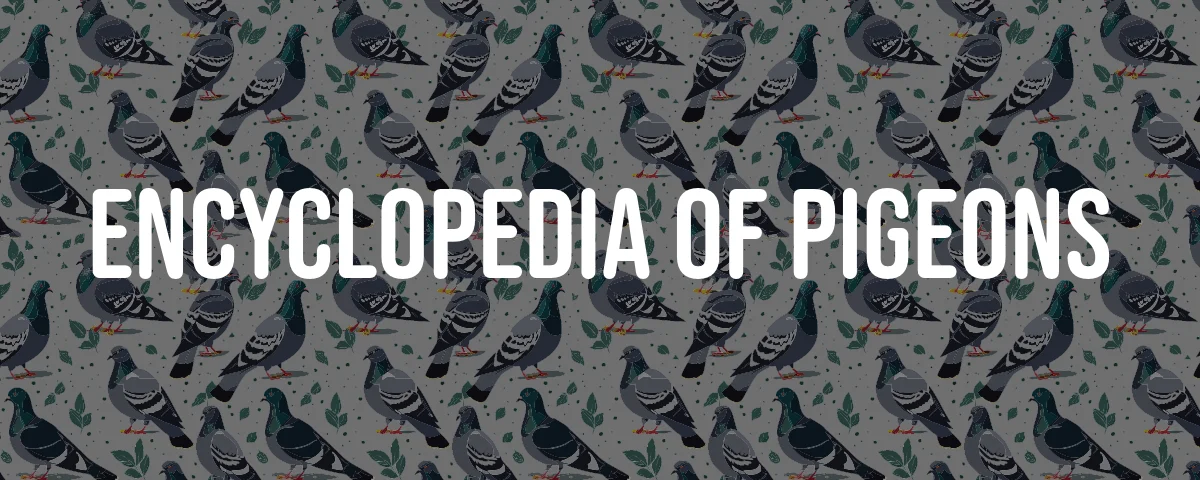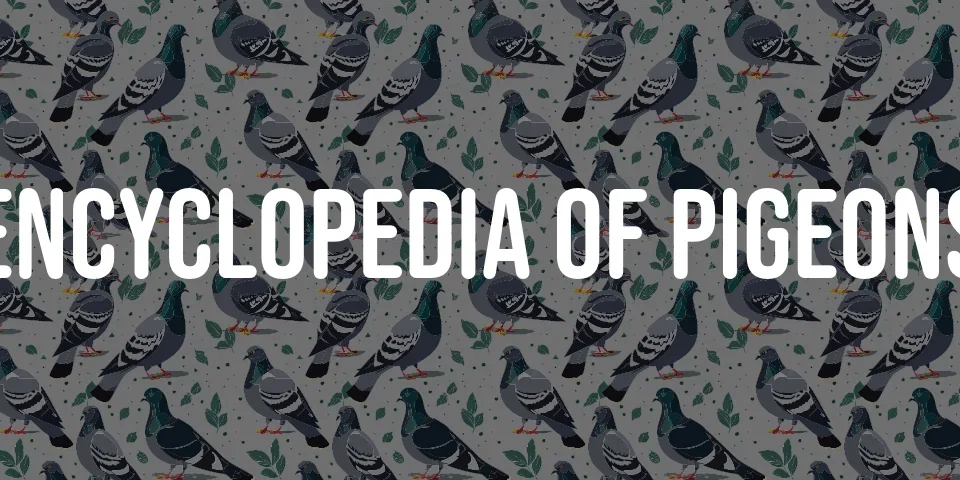Introduction to Hague Highflyer/Hagenaar
The Hague Highflyer, commonly known as the Hagenaar, hails from The Hague in the Netherlands. This domestic pigeon breed, a descendant of the Rock Pigeon (Columba livia domestica), is classified among fancy pigeons. It’s especially known for its impressive flying capabilities, captivating pigeon lovers with its graceful aerial displays and stunning looks.
People admire this Dutch breed not just for its beauty but also for its elegance and practicality. Its exceptional flying skills have carved a niche for it in avicultural circles. With a lifespan of around 16 to 20 years, these birds are quite resilient. Bred meticulously to maintain both flight excellence and distinct visual traits, the Hague Highflyer plays a significant role in the history of pigeon keeping.
Origin and History
The Hague Highflyer, or Hagenaar, has its roots in The Hague, Netherlands. Initially bred for its remarkable flying skills, it quickly became an integral part of Dutch pigeon racing culture. Its unique flight abilities, paired with distinctive white eyes, made it particularly cherished by enthusiasts in places like Amsterdam.
However, the breed faced a severe threat during World War II, teetering on the brink of extinction. Thanks to devoted breeders like Frans Meinen, who tirelessly worked to preserve it, the Hagenaar was brought back from the verge. Post-war efforts were made to restore its status in aviculture. The breed’s resilience and historical significance were acknowledged when the Dutch Rare Breed Survival Trust named the Hague Highflyer the “Breed of the Year 2017.”
Physical Characteristics
A standout feature of this breed is its sleek, close-fitting plumage, giving it a polished look. Adding to its charm are the striking pearl-white eyes with sharp, small pupils. While the breed is available in white, red, and yellow varieties, the immaculate white is by far the most sought-after in exhibitions.
Young pigeons showcasing white feathers might show faint red markings or a subtle reddish hue initially. However, these temporary features typically disappear after molting, revealing the uniform white plumage that breeders and exhibitors highly value.
Distinctive Features
The Hague Highflyer, often fondly referred to as the Hagenaar, is celebrated for its unique characteristics. Its sleek form and sturdy structure bear a striking resemblance to a sea gull, while its predominantly white plumage adds to its allure, making it a favorite among pigeon enthusiasts.
A particularly striking feature is its pearl-white eye, characterized by a small, sharply defined pupil surrounded by smooth, narrow edges that highlight its elegance. With its balanced proportions and compact form, the Hague Highflyer embodies an elegance that is greatly admired in aviculture.
Color Varieties and Eye Characteristics
The Hague Highflyer is renowned for its stunning color spectrum, with pristine white being the most eye-catching and desirable. This snowy hue aligns perfectly with breed standards, making it a top contender in competitive exhibitions. Young birds may occasionally show:
- red feathers,
- a subtle reddish tint,
- immaculate white plumage after their first molt.
Equally enchanting are the eyes, which are crucial in enhancing the bird’s elegance. The ideal eye features:
- a clear pearl-white tone,
- small, sharp pupils,
- mesmerizing characteristics that add to the bird’s refined appearance.
These traits truly embody the refined charm of the breed.
Recognized Colors and Patterns
The Hague Highflyer is celebrated for its captivating color palette, with pure white being the most esteemed. This immaculate hue adheres closely to breed standards and shines in exhibitions. While white takes the spotlight, the breed’s history also includes:
- vibrant red variations,
- lively yellow variations,
- a delightful touch of diversity.
Young white pigeons may initially exhibit a few red feathers or a faint reddish tint, but these usually fade after molting, revealing the immaculate white plumage that is cherished. These unique colors not only enhance the bird’s appeal but also preserve its timeless elegance.
Eye Colour and Eye Ceres
The Hague Highflyer captivates with its distinctive pure white pearl eye, a hallmark of the breed. This eye features a tiny, sharply defined pupil encircled by smooth, pale rings, lending the bird a sophisticated and graceful appearance.
Enhancing its charm are the ceres—the fleshy patches surrounding the eyes—which are well-defined and add to the bird’s distinctive allure. Their tidy and polished texture emphasizes the elegance of this exquisite pigeon breed, showcasing the meticulous breeding efforts that have maintained its beauty.
Common Eye Faults
Eye issues in Hague Highflyers can detract from their elegant appearance and breeding potential.
- Eyes that are too deeply set can diminish the bird’s proud look,
- A reddish tint in the iris strays from the desired pearl-white color,
- Cloudy eyes or a bluish tint do not meet breeding standards.
Furthermore, the pupils must be perfectly round; any irregular shapes or misalignments are considered faults. It’s also essential for the pupils to react promptly to changes in light, as this not only aligns with breed standards but also reflects the bird’s overall health.
Breeding the Hague Highflyer
Breeding the Hague Highflyer involves selecting pigeons with superb flying skills, solid health, and distinctive traits. Breeders aim to uphold the breed’s well-known flight abilities while ensuring qualities like temperament and adaptability are not lost. By pairing birds with complementary traits, they work towards producing young pigeons that meet established breed standards.
Observing the offspring closely is crucial. Breeders often document lineage to track inherited characteristics and refine future generations. Providing proper care—such as a balanced diet and optimal living conditions—is essential for achieving good results.
However, maintaining genetic diversity while preserving key traits can be a bit tricky. It requires thoughtful planning to avoid issues like inbreeding or the gradual loss of essential qualities over time.
Breeding Art and Historical Value
Breeding the Hague Highflyer is an art that revolves around preserving its unique attributes, both in looks and performance. This requires a solid understanding of genetics, careful selection, and unwavering dedication to care. Breeders strive to maintain essential traits such as:
- robust health,
- harmonious proportions,
- eye-catching white feathers,
- renowned flying skills.
This remarkable pigeon carries historical significance as a treasured part of Dutch aviculture. With roots extending back hundreds of years, it embodies the proud tradition of pigeon keeping in the Netherlands. Additionally, the breed has made a significant impact on global pigeon diversity, symbolizing resilience and showcasing advanced breeding practices worldwide.
Breeding Advice and Challenges
Raising Hague Highflyers comes with its own set of challenges due to their territorial instincts and specific care needs. Providing spacious breeding boxes or lofts is crucial to reduce conflicts between pairs. Ensuring they have privacy during mating and while raising their young can help alleviate stress and reduce aggressive behavior.
Caring for the young is especially demanding, as it’s common for only one chick per pair to thrive. To improve success rates, breeders should focus on the following:
- maintaining optimal nesting conditions to avoid abandoned nests,
- keeping a close eye on their feeding routines for adequate nutrition,
- attending to their needs to promote healthier birds.
By addressing these needs, breeders can greatly enhance the survival rate and overall health of Hague Highflyers.
Role of the Dutch Pigeon Association NBS
The Dutch Pigeon Association (NBS) plays a vital role in safeguarding and promoting the Hague Highflyer pigeon breed. In 2016, they partnered with the Dutch Rare Breed Survival Trust to honor the Hagenaar as “Breed of the Year 2017”, aiming to raise awareness and excitement for this extraordinary bird.
Beyond that, the NBS actively supports breeders by organizing events that showcase the breed’s unique qualities. These events:
- cultivate a sense of community among pigeon lovers,
- are crucial for preserving the breed,
- encourage newcomers to get involved in its conservation.
Care and Maintenance of Hague Highflyer
Caring for Hague Highflyers involves focusing on their living conditions, nutrition, and overall health. These pigeons thrive in spacious, well-ventilated areas like lofts or aviaries that allow them to remain active. Keeping their habitat clean is essential to minimize the risk of bacteria or parasites, ensuring a healthier environment.
A balanced diet is just as important for their well-being. Offering high-quality pigeon feed along with grains like millet, corn, and wheat provides the essential nutrients they need. It’s equally important to always have fresh water available to keep them hydrated and in good health.
Regular check-ups with a veterinarian are crucial for early illness detection. Vaccinations can protect them against common diseases like paramyxovirus. Monitoring their behavior and appearance can help spot any health issues before they escalate.
Maintaining a clean living space not only lowers infection risks but also encourages activity by providing enough room to fly within their enclosure. Staying active is vital for maintaining energy levels and extending their lifespan. With attentive care, these pigeons can lead healthy lives that span 5–10 years or even longer.
Housing Requirements
Housing for the Hague Highflyer should prioritize spacious lofts catering to their territorial nature. These spaces must include designated areas for breeding pairs, ensuring privacy and minimizing potential conflicts. This setup fosters a peaceful environment and supports successful nesting and the healthy growth of young pigeons.
Good ventilation is essential for maintaining fresh air, which helps prevent respiratory issues. It’s also important to protect the birds from extreme weather conditions like strong winds, heavy rain, or drastic temperature fluctuations to keep them healthy.
- incorporating sturdy perches,
- adding secure breeding boxes,
- creating an environment that promotes the physical well-being and emotional comfort of this unique pigeon breed.
Feeding and Nutrition
Proper feeding and nutrition are critical for the health and performance of Hague Highflyers. Their diet should consist of:
- grains like millet, corn, and wheat,
- seeds such as sunflower seeds and flaxseeds,
- protein, especially important during the breeding season when their dietary needs are heightened.
Additionally, mineral supplements are necessary:
- calcium and grit for strong bones and aiding digestion,
- fresh water to keep them hydrated,
- vitamin-enriched feeds during molting or stressful times to boost energy and resilience.
Adjusting feeding schedules to align with their activity levels is a wise way to optimize energy management.
Health and Lifespan
The Hague Highflyer is a hardy and adaptable breed that thrives with proper care. With good attention, they can enjoy lifespans ranging from 5 to 10 years, sometimes even longer. Their health heavily relies on a nutritious diet comprising grains and seeds like millet, wheat, and sunflower seeds. It’s also essential to ensure they have access to fresh, clean water to stay hydrated.
- routine vet visits are key for early detection of potential health issues,
- vaccinating against diseases such as paramyxovirus bolsters their immune system and enhances disease resistance,
- maintaining a clean living environment greatly reduces the risk of infections while supporting overall health.
While this breed is generally resilient and not prone to many illnesses, regular health checks are still crucial. Paying attention to any unusual behaviors or signs of illness allows for prompt intervention before minor issues become serious. This vigilance ensures these pigeons have long, healthy lives filled with vitality.
Exhibiting Hague Highflyer
Presenting the Hague Highflyer at national exhibitions not only showcases its unique traits but also ignites interest among pigeon enthusiasts. Events like the West Brabant Show offer breeders a chance to:
- gain accolades,
- attain recognition,
- further elevate the status of this remarkable breed.
These shows not only celebrate the bird’s elegance and skills but also captivate the public, fostering a deeper appreciation for fancy pigeons like the Hague Highflyer.
Participation in National Shows
Engaging in national exhibitions is vital for showcasing the Hague Highflyer breed. Events such as the West Brabant Show provide breeders with opportunities to:
- display these extraordinary pigeons,
- compete for prizes,
- gain recognition.
These gatherings honor the bird’s elegance and unique features, captivating public interest.
By participating, breeders not only highlight the distinct attributes of the Hague Highflyer but also advocate for its recognition within the aviculture community. This involvement encourages excellence in breeding practices and helps ensure this exceptional pigeon remains a source of inspiration while preserving its esteemed status among fancy pigeon lovers.
Show Pens and Exhibition Standards
Show pens designed for the Hague Highflyer are crafted to spotlight the breed’s unique attributes, such as its compact size, sleek feathers, and horizontal posture. These enclosures not only enhance the bird’s appearance but also provide a calming environment. Proper lighting and cleanliness in the pens further improve their presentation.
Exhibition standards emphasize critical characteristics like:
- balance,
- feather quality,
- overall health.
Judges carefully evaluate these aspects during competitions. To meet these stringent criteria, breeders put in considerable effort grooming their pigeons, ensuring they present well and adhere to breed standards.
Hague Highflyer in Aviculture
The Hague Highflyer holds a special spot in aviculture, cherished by fancy pigeon enthusiasts for its unique qualities and historical significance. This remarkable breed enhances the diversity of pigeon varieties and motivates both seasoned breeders and newcomers to explore the art of pigeon keeping.
Fancy pigeons like the Hague Highflyer stand out in aviculture due to their striking appearance and distinctive qualities. They not only showcase beauty at exhibitions but also draw attention to the incredible variety of fancy breeds. This effort nurtures a greater appreciation for breeding traditions and inspires initiatives to protect rare and historic species.
More than just an attractive bird, the Hague Highflyer plays an active role in sustaining interest in pigeon classifications through its involvement in shows and competitions. Traits like flight skills, posture, and feather quality are showcased during these events, allowing judges to refine evaluation standards globally. This balance between traditional breeding values and evolving expectations keeps aviculture lively.
The influence of this breed goes beyond aesthetics; it serves as a bridge between hobbyists and professional breeders alike. As a symbol of excellence within fancy pigeons, the Hague Highflyer fosters unity among global avicultural communities while ensuring that these cherished traditions endure for future generations.
Role in Fancy Pigeons and Utility Pigeons
The Hague Highflyer occupies a unique niche in the pigeon world, bridging both fancy and utility categories. Its adaptability distinguishes it in aviculture.
As a fancy pigeon, it’s celebrated for its elegant appearance:
- sleek feathers,
- striking pearl-white eyes,
- ability to meet rigorous exhibition standards.
These attributes make it a standout at shows and competitions, where its ornamental appeal shines brightest.
On the other hand, as a utility pigeon, its strengths lie in performance:
- originally bred for exceptional flying capabilities,
- exhibits impressive endurance,
- demonstrates remarkable agility in flight.
This unique combination of beauty and practicality underscores its special significance in pigeon keeping, contributing to the diversity across various pigeon breeds.
Contributions to Pigeon Classification
The Hague Highflyer stands as a remarkable representative of the highflyer pigeon breed, known for its distinctive traits. Its sleek feathers and captivating pearl-white eyes make it truly special. Beyond its physical characteristics, this breed carries historical importance that enriches the wide range of pigeon varieties.
Often showcased in exhibitions and competitions, these pigeons attract attention with their refined elegance. Such events are not just displays of beauty; they also play a role in setting international breeding standards. Judges assess attributes like:
- flight performance,
- posture,
- feather quality.
Preserving this breed is about more than just maintaining its lineage. It plays a crucial role in protecting the broader heritage of aviculture, ensuring that future generations can appreciate and learn from this rich tradition.






